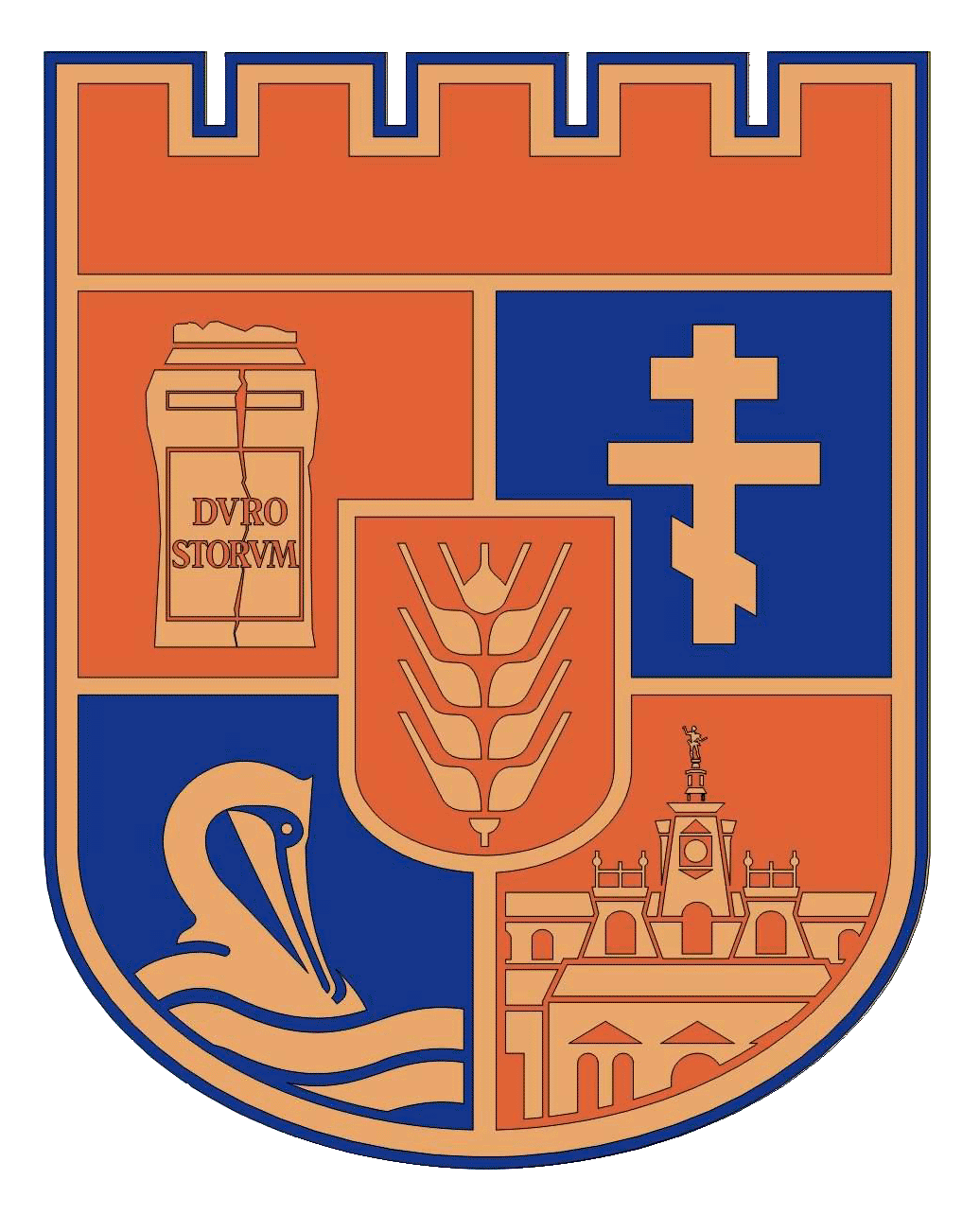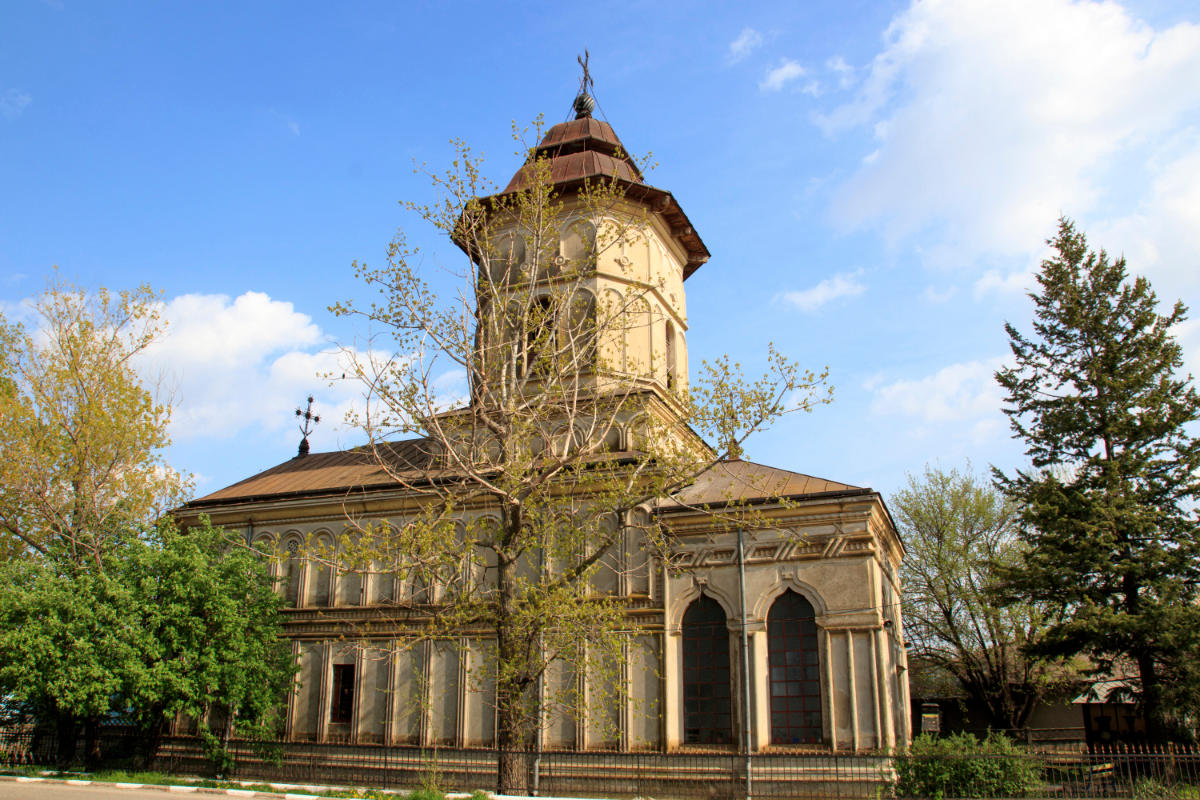St. Dumitru and St. Nestor Church
Category TempleLOCATION
Matei Basarab Street, no.185
Mănăstirea commune, Călăraşi
DESCRIPTION
The church has a 26.7-meter-long, 9.3-m-wide, 25-meter-wide ship shape and is made of thin brick with hydraulic lime and 1.45 m thick walls. It has a single massive tower above the antechamber. The total building area is 230 m2.
The parapet has a rectangular shape. In the antechamber can be found four massive columns. There are two imposing rarely beautiful wood carvings in both the porch and the nave. The massive wall-painting, adorned with beautiful 19th century icons, divides the nave from the semicircle-shaped altar. The nave separates from the antechamber through a wall that is half an arcade. Above this wall, in the side of the nave, is the balcony, which is connected with another smaller balcony, located on the upper left of the antechamber, with the possibility of climbing through a ladder passing through the left wall of the antechamber.
The exterior has many sculpted motifs. The painting of the church was executed in Byzantine style in 1970 by the painter Olga Greceanu, and in 1996 it was restored by the painter Râşcov Miroslav.[1]
HISTORY
This parish church is situated in the center of Monastery, at the intersection of national roads connecting Oltenita, Calarasi and Lehliu.
The church is a voivodal establishment built in the time and command of Prince Matei Basarab and his wife lady Elina in 1648. This is found thanks to the carved stone writing in upper case letters above the entrance door of the antechamber.
In the Cathedral of the Diocese of Ungrovlahia in 1810, the church bears the patron Saint Nestor. Then the village had 83 houses and 505 Romanian and Bulgarian inhabitants. The church, built by the ruler Matei Basarab, is on the estate of the boyar Scarlat Cornescu. Two priests and a teacher served at the church. The priest Strănu sin Drăgoiu was 40 years old, poorly read, of Romanian origin. He was consecrated as a priest by His Holiness Archbishop Dositeu in 1798. In 1800 he moved to the village of Manastirea at the request of the villagers. Priest Istrate sin Popa John was 28 years old of Romanian origin. He was consecrated as priest by His Holiness Archbishop Dositeu in 1801. In 1806 he also moved to this village on the villagers’ request. The chronicles are not reproduced in their entirety. From the 19th century until today the church is also mentioned with the patron Saint Dimitrie the Holy Martyr.
The construction of this holy sanctuary, as a monastery, reinforced with walls, had a strategic defense role in these lands to prevent a surprise attack on the part of the Ottoman Empire over Bucharest. Over time the church has been repaired many times. In 1848 the Greek bolyar Ion Gherman handled, at his own expense, the plastering of the church inside and outside.
In 1900 the church was restored inside and outside, covered with wood, windows and new doors, at the expense of the local royal estate administration. In 1937 it was covered with new wood, a mosaic floor was laid and a fence of concrete and iron was built at the expense of the royal estate. In 1970, consolidation works were being done at the big tower and porch and it was painted in Byzantine style.
The writing from 1900 is above the entrance door of the church and is written in capital letters, incised on a white marble plate: The church of Matei Basarab was restored by King Carol I in 1900. "
The writing from 1937 is also above the entrance door of the church, under the above scriptures, and is written in capital letters, incised on a white marble plate: "In 1937 this holy church was repaired entirely by King Carol II ".
The new scribe is in the porch on the west wall above the entrance door of the holy church and is written in letters painted in red and black on a white background: "With the Father's wishes, with the help of the Son and the Holy Spirit, this holy church once found in the former monastery of Cornăţel, was dedicated in 1648 by the Great Martyr Nestor by Matei Basarab and Elina Doamna”. Ruined by time it has been restored in 1970-1971. In 1996 the painters Gioca Miroslav Rascov and Ion Cosma cleaned and rebuilt it. The worshipers and carers of the last restorations were the faithful of the parish guided by the priest. Parish priest Banu Surcel and pr. Gelu Ion Velicu, helped by epitropy, in the days of the artillery of the Most Holy Nifon, Bishop of Slobozia and Calarasi, Corneliu Irod. The church reopening service took place on October 20th. 1996, being committed by P.S. Niphon surrounded by a group of priests. [2]
SITE SIGNIFICANCE
The St. Dumitru and St. Nestor Church is declared an architectural monument of national importance as well as a historical monument.
VISITOR INFORMATION
It is free to visit.
OTHER INFORMATION
The painting of the church was executed in Byzantine styleл
CLASSIFICATION
Religious site
[1] BISERICA SFÂNTUL MARE MUCENIC DIMITRIE - MĂNĂSTIREA
http://lacasuriortodoxe.sf-esc.ro/protopopiatul-oltenita/536-manastirea.html
[2] BISERICA SFÂNTUL MARE MUCENIC DIMITRIE - MĂNĂSTIREA
http://lacasuriortodoxe.sf-esc.ro/protopopiatul-oltenita/536-manastirea.html




